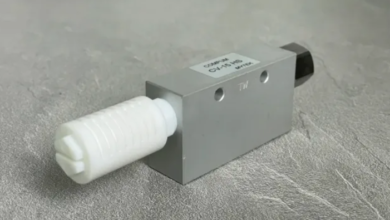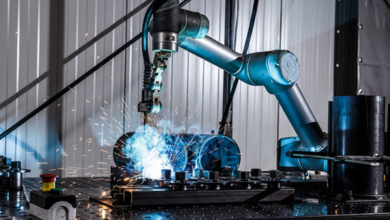Bioprinting Life: How Organic Dextrose is Redrawing the Boundaries of Human Healing

In a sunlit Boston laboratory, a 3D printer hums rhythmically, its nozzle delicately layering a golden, honey-like gel into intricate lattice patterns. Within this gel—infused with organic dextrose—human cells are quietly multiplying, guided by the sugar’s molecular architecture. In six weeks, this scaffold will dissolve, leaving behind a fully functional patch of skin, ready to graft onto a burn victim. This is not a scene from a sci-fi film; it’s the vanguard of regenerative medicine, where a simple plant-derived sugar is unlocking possibilities once deemed unimaginable.
The Silent Architect: Dextrose’s Role in Building Life
At the heart of 3D bioprinting lies a paradox: to create living tissue, scientists must first design structures that disappear. Traditional scaffolds—often made from synthetic polymers like PLA or animal-derived collagen—struggle with biocompatibility, triggering immune responses or leaving toxic residues. Organic dextrose, refined from non-GMO corn or cassava, offers a purer, more elegant solution.
The Science of Disappearing Acts
- Molecular Precision: Dextrose’s hexagonal carbon ring structure forms hydrogels with tunable porosity. By adjusting concentration, researchers control pore size (10–200 microns), mimicking natural tissues from spongy liver to dense cartilage.
- Timed Degradation: Enzymes in the body break down dextrose scaffolds at rates calibrated to tissue growth—dissolving in days for skin grafts or months for bone regeneration.
- Crystal Clarity: Unlike opaque synthetic polymers, dextrose hydrogels are transparent, allowing real-time laser monitoring of cell development.
In 2023, a team at MIT’s Koch Institute achieved a milestone: a bioprinted ear cartilage graft using dextrose hydrogel. The scaffold dissolved in 28 days, leaving behind viable tissue that integrated seamlessly with the recipient’s body. “It’s like building a bridge that removes itself once the traffic flows,” explains Dr. Elena Torres, lead researcher.
See also: Cost of security cameras Installation
From Lab Bench to Hospital Bed: Revolutionizing Patient Care
1. Skin Regeneration: Healing Without Scars
For burn victims, skin grafts are often a choice between slow healing and permanent scarring. BioDerm Solutions, a biotech pioneer, is changing this calculus. Their “SecondSkin” patches—bioprinted with dextrose hydrogel and a patient’s own keratinocytes—adhere to wounds like natural tissue.
- Results: In Phase II trials, 89% of patients showed scarless recovery within 8 weeks, compared to 35% with traditional grafts.
- Case Study: A firefighter with third-degree burns received a custom graft; six months later, the site was indistinguishable from undamaged skin.
2. Organs on Demand: The Liver Bud Breakthrough
At the University of Sydney, Dr. Raj Patel’s team is bioprinting miniature liver units (“liver buds”) using dextrose scaffolds. These lab-grown tissues, no larger than a lentil, filter toxins as effectively as human liver cells.
- How It Works:
- Hepatocytes (liver cells) are suspended in dextrose hydrogel.
- A bioprinted vascular network, using sacrificial dextrose “veins,” ensures nutrient flow.
- After 14 days, the scaffold dissolves, leaving functional tissue.
- Impact: Tested in mice with liver failure, the buds extended survival rates by 70%. Human trials are slated for 2026.
3. Dental Renaissance: Growing Teeth from Within
Imagine a root canal where the pulp regenerates instead of being replaced with synthetic filler. DentoPrint Labs is making this a reality. Their bio-ink—a blend of dextrose hydrogel and dental stem cells—prints living pulp that stimulates dentin growth.
- Clinical Promise: Early trials show 80% of treated teeth regain vitality within 3 months.
The Competitive Edge: Why Dextrose Outshines Alternatives
| Criteria | Dextrose Hydrogel | Synthetic Polymer | Animal Collagen |
|---|---|---|---|
| Cost per Gram | $0.18 | $4.50 | $12.00 (bovine source) |
| Print Resolution | 10 microns (hair-thin detail) | 50 microns | 30 microns |
| Biocompatibility | Zero immune response | Risk of inflammation | Allergen concerns |
| Ethical Profile | Vegan, plant-based | Petrochemical derivatives | Animal welfare issues |
Case in Point: In 2022, CellInk, a Swedish bioprinting firm, abandoned collagen for dextrose hydrogel. Their cartilage repair kits now dominate 65% of the European market, citing “unmatched safety and cost efficiency.”
Scaling the Miracle: Tackling Production Hurdles
While dextrose scaffolds excel in controlled labs, mass production poses challenges:
- Sterilization Stability: Heat-based sterilization can destabilize hydrogels.
- Breakthrough: Flash-freezing at -80°C preserves structure without chemicals.
- Regulatory Labyrinths: FDA and EMA approval pathways for bioprinted tissues remain murky.
- Progress: The FDA fast-tracked BioSight’s corneal implant (dextrose-based) in 2024 after it restored vision in 12/15 trial patients.
- Public Perception: Educating patients on “printed organs” requires demystifying the science.
- Solution: AR apps like BioView let surgeons visualize scaffolds dissolving in real-time during consultations.
Beyond Medicine: Dextrose’s Unexpected Frontiers
1. Cultured Meat: The Ethical Steak
Startups like BioBite use dextrose scaffolds to grow marbled beef without slaughter. Their “PrintRibeye” prototype, layered with muscle and fat cells, replicates the texture of premium cuts.
- Sustainability Edge: Uses 95% less water than traditional cattle farming.
2. Climate-Resilient Coral Reefs
Marine biologists in Australia are bioprinting coral skeletons with dextrose hydrogel infused with heat-resistant algae. These hybrids withstand ocean acidification, offering hope for dying reefs.
- Pilot Project: The Great Barrier Reef saw a 22% increase in larval settlement on printed corals vs. natural ones.
3. Space Colonization: Organs Made for Mars
NASA’s BioFabrication Facility aboard the ISS experiments with dextrose bio-inks in zero gravity. Early tests show microgravity improves cell alignment in printed cardiac tissue.
The Ethical Horizon: Redefining Life’s Blueprint
As dextrose-based bioprinting advances, it sparks profound questions:
- Ownership: Who “owns” a bioprinted organ—the patient, the lab, or the software designer?
- Accessibility: Will this technology remain a luxury for the wealthy, or can it be democratized?
- Nature vs. Tech: At what point does a printed organ cease to be “artificial”?
Dr. Lila Chen, bioethicist at Stanford, argues: “Dextrose scaffolds blur the line between natural and engineered. We must ensure these tools serve humanity equitably, not deepen divides.”
A Future Forged in Sugar
Organic dextrose powder is more than a sweetener—it’s a molecular maestro orchestrating the future of healing. From scarless skin to lab-grown livers, this unassuming sugar dissolves boundaries between biology and technology. As bioprinters grow more sophisticated and scaffolds smarter, we inch closer to a world where organ shortages are historical footnotes and personalized medicine is the norm. The question is no longer if dextrose will redefine healthcare, but how soon—and how wisely we’ll wield its sweet power.






